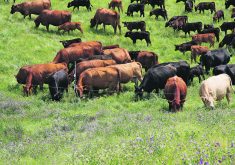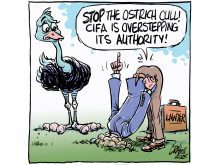Misplaced optimism
In response to the article “Supreme growing conditions for West expected” (WP, March 3). It was disappointing to read the enthusiastic voice of a climatologist predicting supreme growing conditions in Western Canada, resulting from the current extreme El Nino events.
Although difficult to model, there is no doubt that the current trends in El Nino events are being amplified by global warming trends; therefore, resulting in a higher frequency and intensity of El Nino events, ones that have been rippling their effects around the globe.
Read Also

Budget seen as fairly solid, but worrying cracks appear
The reaction from the agriculture industry to prime minister Mark Carney’s first budget handed down November 4th has been largely positive.
From my standpoint, weather patterns are not just a little screwed up, but rather may be due to a much larger consequence. The consequence being, countless years of anthropogenic effects leading to climate warming, resulting in the many intensified and prolonged weather events that we have been seeing around the globe in recent years.
Perhaps supreme conditions resulting from an El Nino are not something that should be viewed positively, when the consequences of why this is occurring, far outweigh the benefits of a single good growing season.
Globalization has led to a great interconnectedness in resources; therefore, a loss in one area should start to be viewed as a loss of the whole system. Western Canada relies on major imports from both provincial and international neighbours. Should we not be more concerned that our neighbours are facing conditions that will not be favorable to production? If I’m not mistaken, self-mindedness and competition within the market is what led us into climate issues to begin with.
Megan MacGregor
Sherwood Park, Alta
Quill Lakes Flooding
In 1953-55 we had some of the wettest years of my farming years. In these years the government put in dragline ditches to take the high water off the roads and sloughs. It also had a program for farmers to put dynamite ditches in to also alleviate high water levels.
Then we got a few drier years and the water levels went down. In the late 1960’s the water levels rose again, so conservation and development areas were developed and laterals were dug following the dynamite ditches to remove the water from the land.
Then farmers got v-ditchers going from slough to slough draining their land into these laterals in the fall so they would take most of the spring run off their land. The ditches would then be closed prior to seeding. All rains in the summer they stayed on the land. All through this time there were no problems flooding the Quill Lakes as there was very little summer run off to fill the lakes.
The farms then became bigger and larger machines and scraper buggies, laser guided scraper to get complete drainage on their farm land hence starting the flooding of Quill Lakes. As 10 minutes after the rain stopped all the water left their land onto the neighbors and flooding lands along the waterways to the Quill Lakes.
The drainage basin running into the Quill Lakes is 17 times larger then the Quill Lakes so if we get 15 inches of rain in the summer, the lake goes up 15 inches plus 17×15 equals 155 inches. So if 10 percent runs off of the fields, it would add another 15 inches to the lake. The lake would rise 30 inches.
The problems will never go away unless the tap is shut off. No water should leave the land after seeding barring a monsoon rain. Ditches have to be filled to control run off. I was a C&D area authority for 38 years. I still use v-ditches on my fields, closing them in the spring.
Who ever gave a farmer the right to drain and flood out the neighbours? Most drainage is illegal as mostly no one obtains permits. There is only one way to solve the problem is shut off the tap.
If governments put a stoppage to drainage they will only hurt the small farmer to protecting themselves by not allowing v-ditches to stop getting flooded out, as most large farms are completely drained. Everyone must do their part to alleviate flooding.
Albert Schryvers
Quill Lake, Sask.














